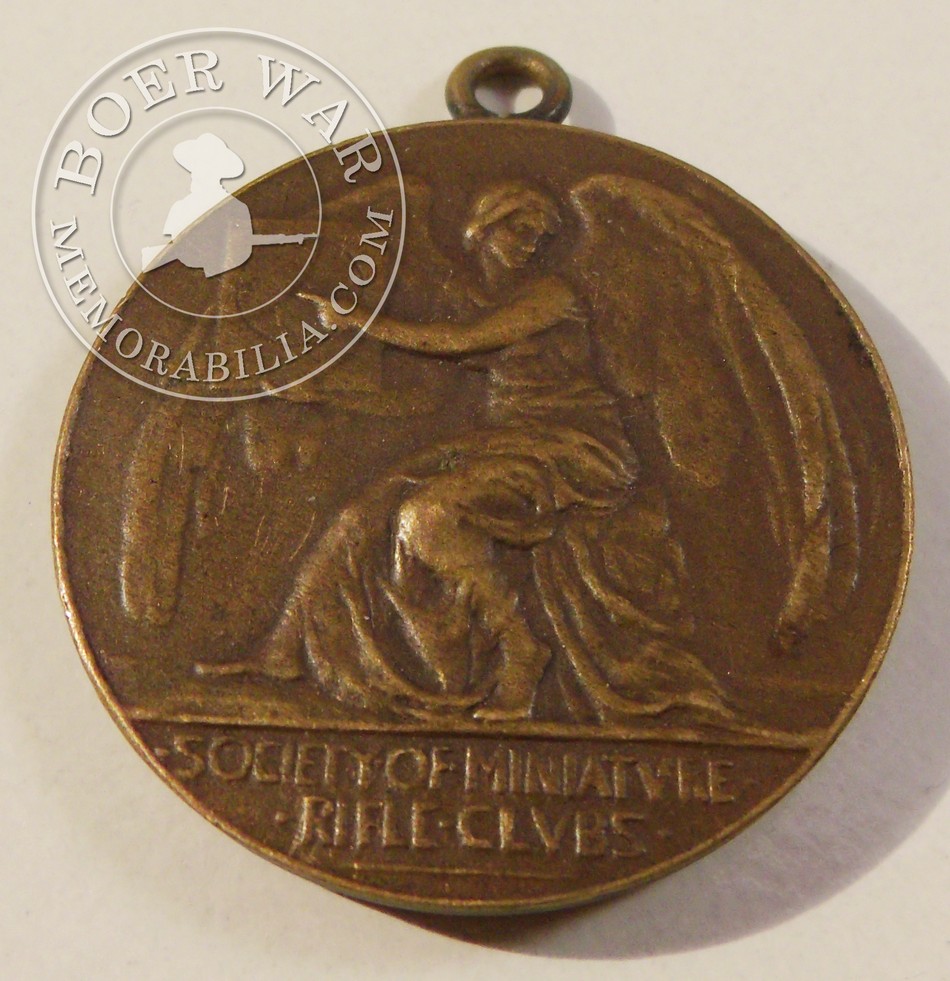|
|
Item Ref# MS7447
Lord Roberts of Kandahar / Miniature Rifle Clubs
Brief description: This is an award given to British citizens in recognition of achieving a minimum shooting standard. The Brirtsh campaign was full of examples of poor marksmanship and faulty rifles (recalled rifles due to faulty sights). The Boers were often not seen during combat as a result of their excellent marksmanship - outshooting anyone on distance.
Before serving as the Commander-in-Chief of the British Forces during the Boer War, Lord Roberts had served with distinction in the Indian Army, eventually becoming its Commander-in-Chief. He was awarded the Victoria Cross for repeated bravery at the time of the Indian Mutiny. His defeat of the Afghan rebels, during his march from the capital, Kabul, to relieve the besieged city of Kandahar, cleaned the slate of previous British defeats and brought peace to the North-West Frontier region of British India.
During the South African War it became apparent to Lord Roberts that his British Troops, particularly the Volunteer Regiments, were far less accurate shots with their rifles than the Boers for whom the rifle had been a part of everyday life from boyhood.
On his return to Britain in 1900, Lord Roberts was instrumental in promoting rifle clubs with the aim of encouraging marksmanship skills so that the British people would be better prepared in the event of another war. The Society of Miniature Rifle clubs was formed in 1901, and by 1903 there were some 300 affiliated clubs throughout the country. Military rifles like the Lee Enfield had a caliber of .303mm, but these clubs used small-bore .22mm rifles which were cheaper, used less expensive ammunition, and needed a shooting range of at most 100 yards.
Material: Bronze (cast)
Manufacturer: tbc
Artist: LH
Circa: 1901
Dimensions: 30.0mm
Weight: 13.9g
Inscription:
Obverse: Uniformed bareheaded bust of Lord Roberts facing right with a small lion rampant below.
Signed, to the left of the lion, incused: “LH / 1900” (there are slight variations in the position and appearance of this mark).
Legend: “. FIELD . MARSHAL . LORD . ROBERTS . OF . KANDAHAR .”
Reverse: A seated angel, with wings outstretched, holding a rifle target in her right hand and pointing to the bulls-eye with her left. In the exergue: “. SOCIETY . OF . MINIATVRE . / . RIFLE . CLVBS .”
|

Boer Moto: Eendragt Maakt Magt (Unity is Strength)
Lack of manpower was doubly problematic for the Boers. On the one hand they were steadily losing men who were opting out of the war while the majority were those who were being captured by the British.
On the other hand the British numbers increased and the replacement of wounded and sick troops was ongoing. On 17 May 1902 it was reported that the total number of Boer prisoners of war was 32 384, of whom 24 277 were in overseas camps and 3 192 in refugee camps.
This number should be compared with the 10 816 burghers in the field in the Transvaal of which it is estimated 3 296 of them were horseless and 6 100 in the Free State (according to statistics reported in the minutes of the peace talks at Vereeniging). These same figures were also provided in the Journal of principal events on 16 May. Furthermore, General Smuts claimed that there were 3 300 men active in the Cape Colony.
This meant that by May 1902 there were just over 20 000 burghers under arms to face the British force of approximately 207 000. Although this seems to compare favourably with the ideal ratio of 1:10, numerous other factors should also come into reckoning before such a claim can be made.
Source: The Psychological Impact of Guerrilla Warfare on the Boer Forces, UP
| Scripture |
“Behold the fowls of the air: for they sow not, neither do they reap, nor gather into barns; yet your heavenly Father feedeth them. Are ye not much better than they? Which of you by taking thought can add one cubit unto his stature?”
Matthew 6:26, 27
|


